In an uncertain retail climate, the baby market remains vibrant.
There are two certainties in life (aside from death and taxes, that is): People will continue to procreate and friends and family will celebrate the miracle of birth. So while much of the childrenswear industry is suffering from increased competition from online entities like Amazon chipping away profits and a severe retail correction forcing brick-and-mortar closures across the country, many brands and retailers are reporting that sales of gifts, clothing and other products for babies are healthy and strong.
(For purposes of clarification, we are referring to the baby category as products and clothing for newborns as birth-to-two-months old, infants as two-months to two-years, and toddlers as 18-months to age three.)
“It’s on fire,” confirms Ben Friedman, president of the 100-year-old all-things-baby company Feltman Brothers based in New York City, when asked whether his newborn to toddler business has been robust. He emphatically adds, “100 percent!” Feltman’s layettes, take-me-home gowns, day gowns, sweater sets and dresses that feature detailed hand-smocking, hand-embroidery in high-quality Pima cotton give the collections an heirloom quality which is appealing to new moms. An average sale at retail, says Friedman, is $50 and even more if you’re a grandparent. The sweet spot for gift items is $60. Friedman says Feltman is sticking with traditional styles—not adult take-downs. “We offer clothing to make babies look like babies,” he says. “And anytime you’re at a baby shower, and you’re out there keeping up with the Joneses, the higher-end lines benefit.”
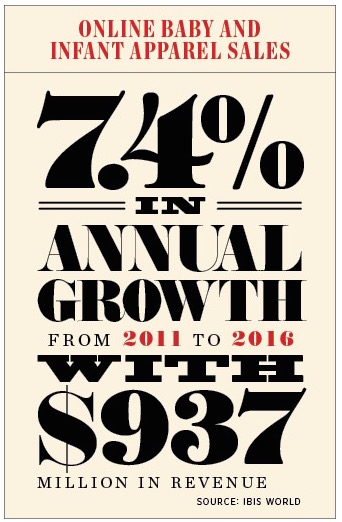 Millennial moms are also doing quite a lot of shopping for their babies. Canadian brand Deux par Deux launched its e-commerce operation two years ago and found new moms make bulk purchases for ages 3-months to 9-months, according to owner and vice president Zacharie Elmaleh. “There are two types of consumers,” he says. “There’s the Carter’s and mass market customer. Then there’s the more fashionable customer who will invest a little bit more money, and this customer shops the Internet and specialty boutiques.” Elmaleh says that it’s precarious walking the tightrope between selling directly to the customer—giving them easy returns and a great experience—and satisfying the brand’s 300 specialty boutiques in the U.S. and Canada. “We want to help our boutiques,” he says. “We won’t go on sale before them. We’ll go on sale two weeks after them. We don’t want to take their business.” While the market is there for traditional baby blues and pinks, the Montreal-based brand finds success with fashion-forward mini-me silhouettes, patterns and mix-and-match sets. The design team is inspired by adult fashion, Vogue magazine, street style and cool graphics, offers Elmaleh. “We just try to add a little childish twist to it,” he says. “We really try to bring fashion to the kid world.”
Millennial moms are also doing quite a lot of shopping for their babies. Canadian brand Deux par Deux launched its e-commerce operation two years ago and found new moms make bulk purchases for ages 3-months to 9-months, according to owner and vice president Zacharie Elmaleh. “There are two types of consumers,” he says. “There’s the Carter’s and mass market customer. Then there’s the more fashionable customer who will invest a little bit more money, and this customer shops the Internet and specialty boutiques.” Elmaleh says that it’s precarious walking the tightrope between selling directly to the customer—giving them easy returns and a great experience—and satisfying the brand’s 300 specialty boutiques in the U.S. and Canada. “We want to help our boutiques,” he says. “We won’t go on sale before them. We’ll go on sale two weeks after them. We don’t want to take their business.” While the market is there for traditional baby blues and pinks, the Montreal-based brand finds success with fashion-forward mini-me silhouettes, patterns and mix-and-match sets. The design team is inspired by adult fashion, Vogue magazine, street style and cool graphics, offers Elmaleh. “We just try to add a little childish twist to it,” he says. “We really try to bring fashion to the kid world.”
Wendy Carter, owner of Yikes Twins, also walks the balance bar between e-commerce, promoting her brand on Instagram and selling to specialty boutiques. The brand specializes in baby towels and slippers that sell between $39 and $48 and Carter limits what she sells online. “I’m a big believer in supporting my stores and I will not undercut the stores, by selling [the full collection] online,” she says, adding, “I worry for them, and I want to make supporting them a big deal.”
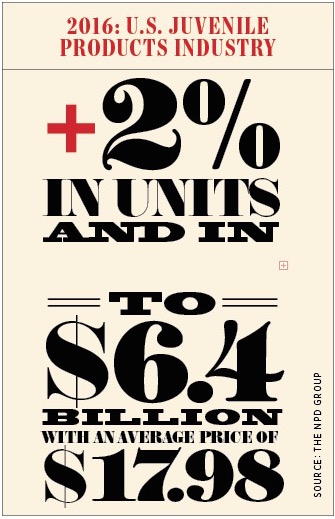 With the advent of Pinterest, moms, grandparents and friends are better educated on what’s available in the baby market, says Juni Walsh, co-owner of Vintage Baby by Margery Ellen based in Marin County, Calif. “It’s hard to find cute baby clothes that are not Target or Carter’s,” she says. “People want to have a special outfit for photos and people will spend for that baby.” Vintage Baby produces wrap sets, gowns, hats, dresses and rompers in Peru Pima cotton ranging in price from $5 to $22 retail. The company’s embroidered footies, $21, are the number-one bestseller. Walsh says the average purchase for a baby shower gift in her region has shot up between $100 and $150. No one wants to come across as the cheapskate at a party in Silicon Valley, she explains. “They’ll buy several items,” says Walsh. “They’ll buy and toy and a hat—make it a nice.”
With the advent of Pinterest, moms, grandparents and friends are better educated on what’s available in the baby market, says Juni Walsh, co-owner of Vintage Baby by Margery Ellen based in Marin County, Calif. “It’s hard to find cute baby clothes that are not Target or Carter’s,” she says. “People want to have a special outfit for photos and people will spend for that baby.” Vintage Baby produces wrap sets, gowns, hats, dresses and rompers in Peru Pima cotton ranging in price from $5 to $22 retail. The company’s embroidered footies, $21, are the number-one bestseller. Walsh says the average purchase for a baby shower gift in her region has shot up between $100 and $150. No one wants to come across as the cheapskate at a party in Silicon Valley, she explains. “They’ll buy several items,” says Walsh. “They’ll buy and toy and a hat—make it a nice.”
These days, parents are willing to shell out more money for brands that have baby-healthy attributes like chemical- and dye-free. Baby Roro, a four-month-old brand that held its first trade show at Children’s Club in February, specializes in clothing that is 100-percent natural and was pleased by the demand. “It’s a very competitive field,” says Roya Delshad, vice president of the company, noting her Millennial daughter buys only organic, natural and chemical-free goods for her two grandchildren. “We are a new company, and we just had our first show, and we got a good response.”
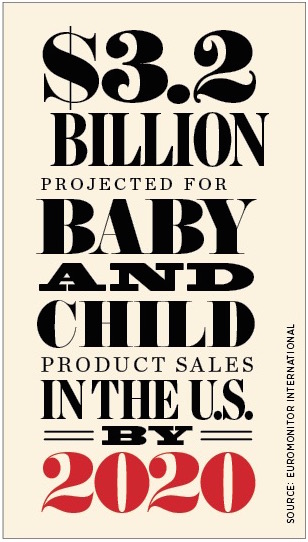 Equally appealing to parents these days is locally-sourced goods and brands with a story to tell. And don’t underestimate the appeal of the local mom-and-pop children’s store. Tracy Michele Bullock, executive manager of Wild Was Mama in Brooklyn, N.Y., reports that the baby business has been steady. The store specializes in heirloom items, merino wool items in the colder month, and sells organic on a small scale. “Many of our customers know that items are made locally,” she says, noting that’s an attribute that her customers find important. “And, if it’s not local, then we find brands in the U.S. or in Europe,” she adds. “We don’t take on a brand casually. We want to deeply invest in the story and stand behind it. It’s our mission. Our customers encourage and reward that.” Wild Was Mama doesn’t present gift sets for new parents and baby. Rather, the store encourages customers to buy gift certificates so that mom and baby get exactly what they need. When asked whether online shopping is encroaching on her business, Bullock says no. “People pay a lot of money to live in this neighborhood,” she says. “They buy the brownstone, send children to good schools, and they want the local wine store and the butcher. People know us. And We have highly-trained salespeople to facilitate and empower families. I have no fear of online or big box stores.”
Equally appealing to parents these days is locally-sourced goods and brands with a story to tell. And don’t underestimate the appeal of the local mom-and-pop children’s store. Tracy Michele Bullock, executive manager of Wild Was Mama in Brooklyn, N.Y., reports that the baby business has been steady. The store specializes in heirloom items, merino wool items in the colder month, and sells organic on a small scale. “Many of our customers know that items are made locally,” she says, noting that’s an attribute that her customers find important. “And, if it’s not local, then we find brands in the U.S. or in Europe,” she adds. “We don’t take on a brand casually. We want to deeply invest in the story and stand behind it. It’s our mission. Our customers encourage and reward that.” Wild Was Mama doesn’t present gift sets for new parents and baby. Rather, the store encourages customers to buy gift certificates so that mom and baby get exactly what they need. When asked whether online shopping is encroaching on her business, Bullock says no. “People pay a lot of money to live in this neighborhood,” she says. “They buy the brownstone, send children to good schools, and they want the local wine store and the butcher. People know us. And We have highly-trained salespeople to facilitate and empower families. I have no fear of online or big box stores.”
Thanks to a steady stream of newborns and grandparents, extended family and friends eager to open their wallets wide for the little angels at baby showers, customers come to Burro, which opened a kids store on Abbott Kinney in Venice, Calif., six years ago. The store features a wide assortment of clothing and toys from newborn to age 6. While the average purchase for birthdays usually rings in between $25 and $50, the average expenditure for newborns is double, between $50 and $100. “We sell swaddle blankets in sets of three, or maybe a little outfit with a book and a stuffed animal,” says Krista Harris, Burro’s childrenswear buyer, noting that despite the trendy neighborhood and its edgy clientele, customers still tend to go for traditional pinks and blues. “It’s classic gift-giving,” she says. “People are willing to spend money on babies. They’re a little less willing when their kids are older.” •
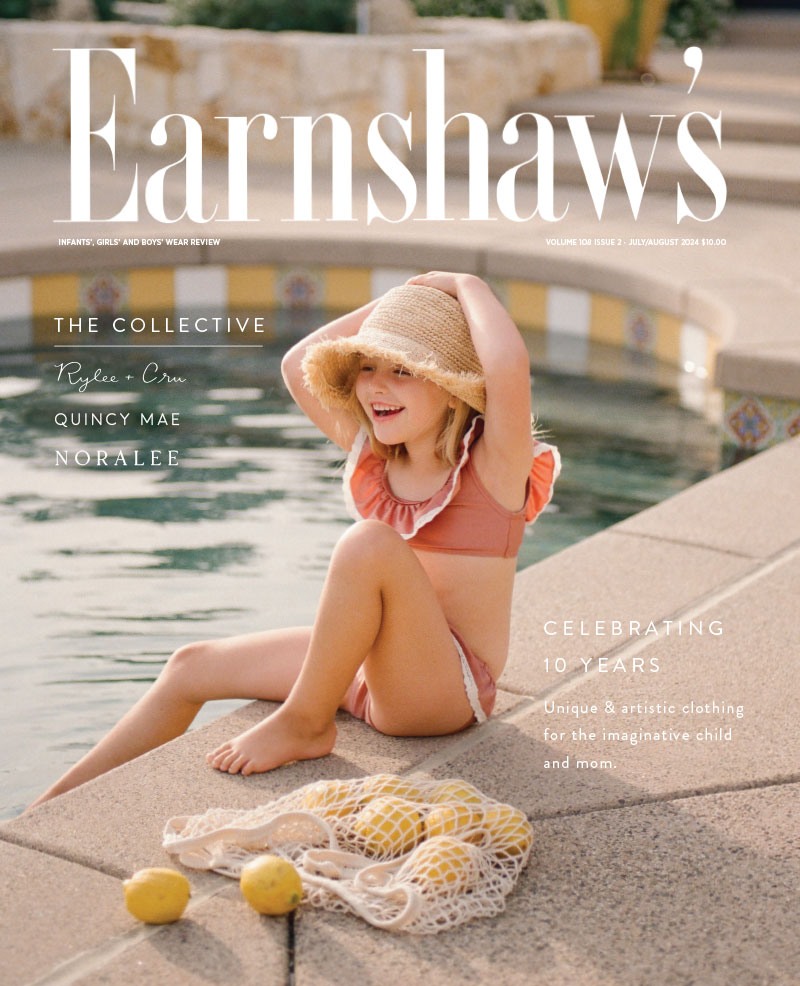

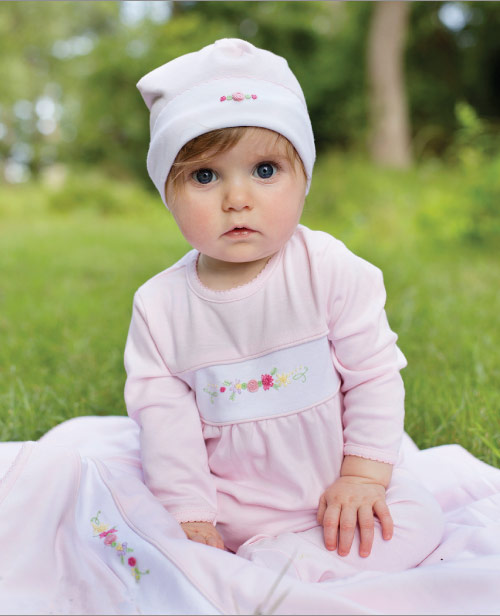

Leave a Comment: